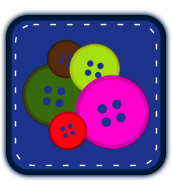A little Thanksgiving reflection regarding social skill acquisition
So this Saturday I’ll be gathering with about 40 of my closest relatives for a day of shared goodies, chatter, and general loudness. Some families may be quite, my family is quite the opposite. There will be at least 12 kids there that I know of, not including other random add ins that might occur last minute.
On top of it all Robey and I will be hosting my two nieces Kate and Liz for at least one, if not two nights, while all the extended family is housed at other varying family residential locations. It will be fun to have the girls over for a sleep over. I don’t know how we’re going to get any rest this upcoming weekend though. Let’s just say it’s going to be busy.
One of the things I do enjoy about Thanksgiving (besides all the amazing holiday traditional food items), is that it provides for a grand opportunity to see people you might not normally visit with. Even if family can get crazy, or awkward conversations occur, family helps to provide context for the rest of the world in a safe way. From my experiences, there is almost no family in existence that doesn’t have it’s own share of differing opinions between it’s members. Family also has the tendency to forgive more often, and let go, because, well, ‘you’re family’. When all is said and done you’re still expected to see them next year at the gathering.
So if you’re Holiday season this year is stressing you out, remember that your family was and always will be the first battle ground towards social prowess. You learn to slide over topics, or you learn when it’s okay to delve in a little deeper. You also learn how to identify certain types of people in a crowd, like who has the power in a group. So, from a much more business’esque standpoint take a step back and try to view your family as how someone from the outside might see them. That’s how some of my best personal growth has occurred.
Up Next Time: My first attempt at an HTML5 game: Science Fiction Tower Power




 2012 FlamingLunchbox unless otherwise noted.
2012 FlamingLunchbox unless otherwise noted.